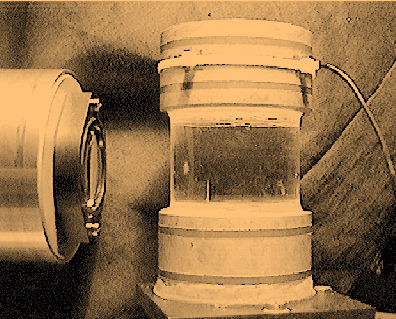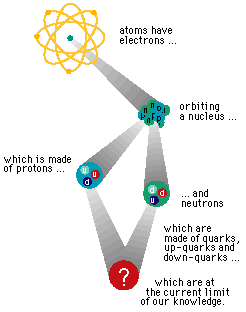|
Unity from Disparity: the quest for a unified description of the Universe (Physics
Department, May 2003) Abstract:
The idea that all the laws of nature could
be accounted for by a small number of fundamental principles is very old. In its
modern version the problem has been reduced to the reconciliation of the two
pillars of physics: the general theory of relativity and the quantum theory of
matter. Although the quest for unification lies at the borderline between
“palpable” physics and contemplative metaphysics it is far from being
completely speculative. It has given birth to some of the most dramatic
scientific achievements of all time. Among the landmarks one finds: Newton’s
mechanics, Maxwell’s electromagnetism, Einstein’s relativity,
and the Glashow-Salam-Weinberg electroweak unification. But these are
only “partial unifications”, and it is very likely that reaching the
ultimate goal of unifying the whole of physics within a single mathematical
framework will require radically new ideas. The problem, however, has turned out
to be so intractable that it is not even clear today whether subjecting the
theory to experimental tests will be technologically feasible, if the theory is
ever conceived. This talk is a non-technical review of the historic itinerary of the concept of unification from its old philosophical origins to its most recent theoretical embodiments.
|
 |
|
Sonoluminescence (Physics Department, February 2002) Abstract Sonoluminescence
is the puzzling emission of flashes of light during the implosion of a
gas-filled bubble maintained by sound waves in a
liquid. In some sense, sonoluminescence is the conversion of sound into light. 1) The temperature of the collapsed bubble is believed to have a lower limit of about 10000 K (while the Sun has a surface temperature of “only” 6000 K!) 2)Energy
seems to be concentrated by a factor of 1012 ! 3)
The flashes of light are so brief that they last for only about 50 ´
10-12 s ! 4)
Near the final stages of implosion the liquid-bubble interface moves at a speed
more than Mach 4 (that is more than 1 km/s !) 5) When the bubble starts expanding, its interface accelerates by at least 1011 g (that is about 1012 m/s2 !) Although
known to physicists since 1934, the mechanism behind this intriguing phenomenon
remains a mystery. If you want to know how to obtain sonoluminescence you can see this page: www.techmind.org/sl/sono.html
|
 |
|
Dark Matter in the Universe (Physics Department, October, 1999) Abstract Based on more than 60 years of accumulated evidence, scientists believe that as much as 90 % of the stuff constituting the Universe may be objects or particles that are unobservable. Black holes, brown dwarfs, hidden planets and supersymmetric particles are just some of the candidates for this missing mass or "dark matter". The problem is so intractable that in their quest for solutions some scientists were even led to the questioning of the laws of physics at large scales. This is an informal talk (no equations or almost!) about one of the most puzzling mysteries of modern science. All are welcome. If you want to know more about the Universe you can visit this site: NASA
|
 |
|
What's an Elementary Particle? (Physics Department, November, 1997) Abstract The physics community celebrates this year the centennial of the discovery of the electron by J. J. Thomson in 1897, an event which physicists recognized as the revelation of the first of the building blocks of matter or "elementary particles" as per modern terminology. But the family of elementary particles has grown since, and the concept of elementary particle has turned out to be more subtle than previously thought. With this talk, we would like to mark the anniversary of that discovery by tracing the evolution of the concept of elementary particle from the very first speculations of ancient philosophers to modern physicists facts and future prospects. No previous acquaintance with the subject will be assumed. If you want to know more about elementary particle physics you can visit this site: The Particle Adventure
|
 |